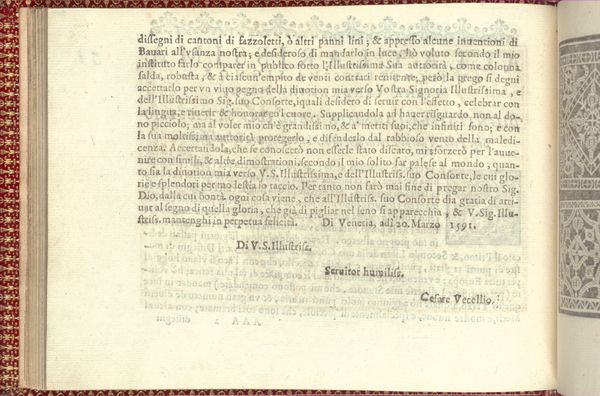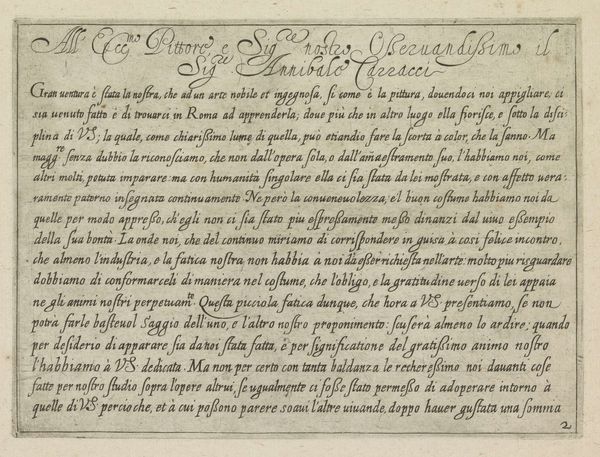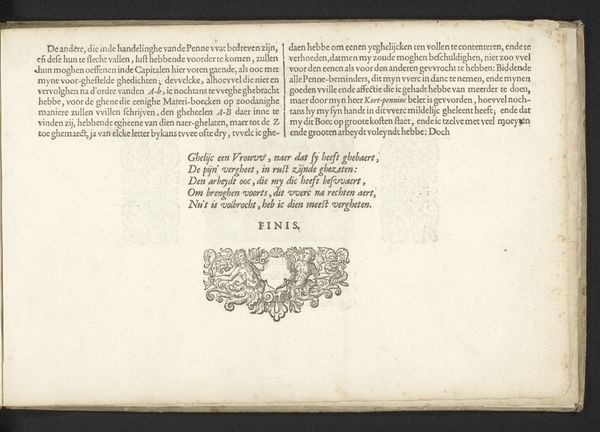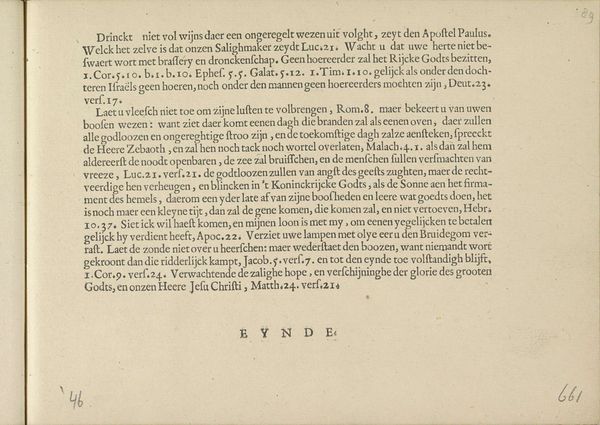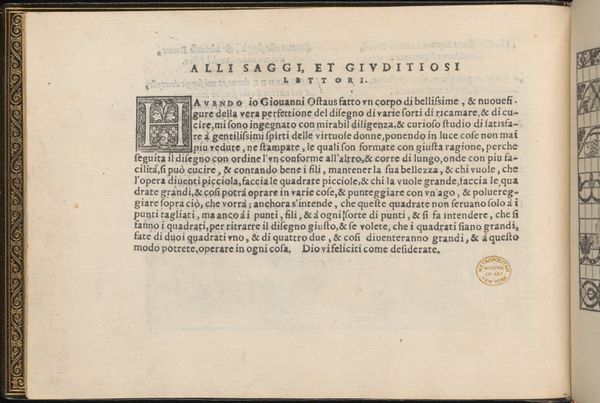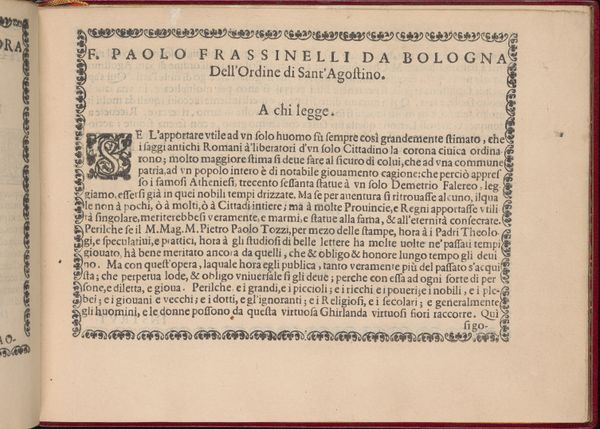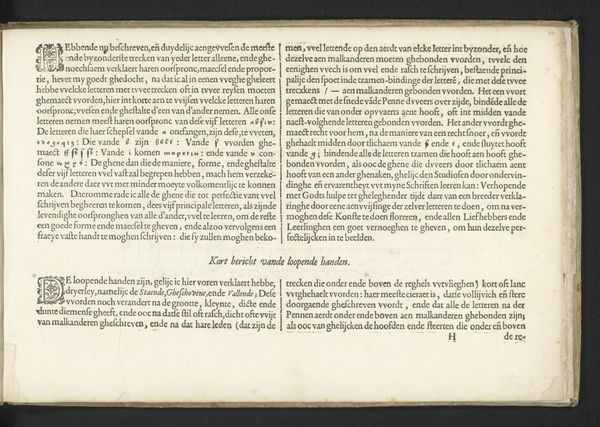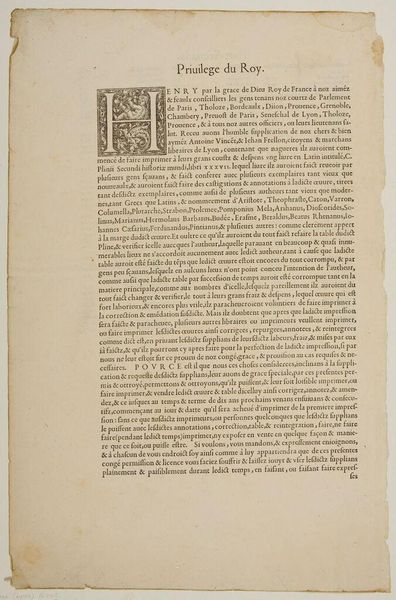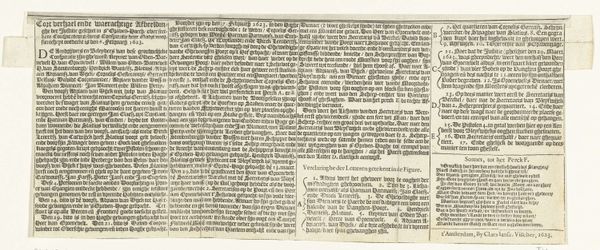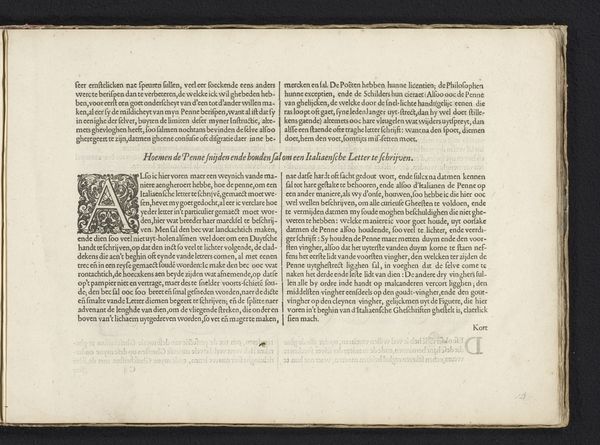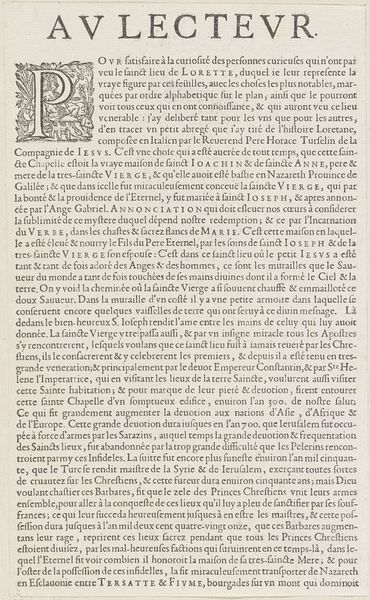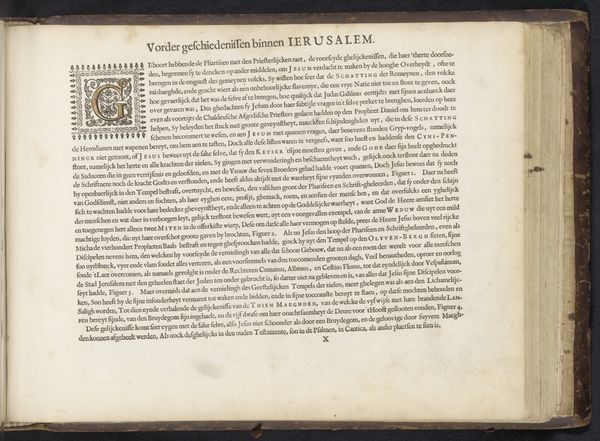
graphic-art, print, engraving
#
graphic-art
# print
#
engraving
Dimensions: height 141 mm, width 190 mm
Copyright: Rijks Museum: Open Domain
This German language preface was made in the 17th century by Crispijn van de Passe the Younger, and printed from an engraving. It’s essentially an early form of mechanical reproduction, yet required an immense amount of skilled labor. Consider the work involved: first, designing the page layout and typography; next, the exacting work of carving the letters and ornaments in reverse, so they would read correctly when printed. You can almost feel the engraver’s hand as he meticulously cut into the metal plate, guided by long traditions of calligraphy and printing. What was the purpose of this effort? To make the text reproducible and widely available. This speaks volumes about the culture of the time, the rise of print culture, and the associated expansion of literacy and the public sphere. It exemplifies the ways in which artistic expression intersected with commercial enterprise, mass communication, and politics. It bridges the gap between craft and fine art, reflecting their interconnectedness.
Comments
No comments
Be the first to comment and join the conversation on the ultimate creative platform.
